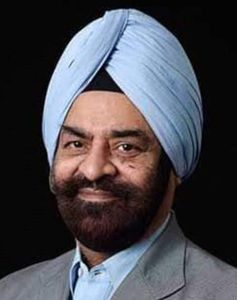Every day we hear of accidents. We forget them till tragedy strikes our backyard. Sadly, we fail to recognise the truth that accidents do not occur, they are always caused. The economic growth and rising aspirations of rural Indians during the past two decades have caused unprecedented and heavy migration from villages to cities. Consequently, the country is witnessing auto growth at a galloping pace, from just three lakh vehicles in 1951, to more than 30 crore today, with an annual addition of nearly 2.5 crore. Unfortunately, traffic and transportation infrastructure could not keep pace with escalating demands.
The road length is just 59 lakh kilometres today, as against four lakh kilometres in 1951. Thus, whereas the vehicular rise has been stupendously high—nearly 1,000 times, the road infrastructure could be increased hardly 15 times. Two-wheelers are adding at an unbelievable pace. As a result of these abnormal disparities, our limited roads are heavily clogged by private vehicles, while public transport falls woefully short to meet the ever-increasing demand.
In cities, the main causes of accidents are :
* Missing lane markings
* Erratic parking and manoeuvring
* Signal jumping
* Use of mobile phone while driving
* Pedestrians lacking discipline
* Hawkers and slums usurping main carriageways
* Bad roads and potholes
* Unprotected excavations
While it is undeniable that existing infrastructure needs improvement, it cannot be expanded endlessly. It is, therefore, essential to make the optimum use of existing infrastructure by using low-cost traffic management techniques such as one-ways, banning certain turns, parking control, besides encouraging use of public transport and providing better facilities for pedestrians.
Five new Es (energy, equity, economy, efficiency and environment) have been added to the hitherto accepted three Es of road safety (engineering, enforcement and education) while formulating new strategies all over the world.
We have to adequately cater for:
* Expressways and upgrade of national and state highways
* Dedicated cycle lanes in major cities
* Segregation of non-motorised vehicles from high-speed traffic
* Adequate facilities for pedestrians, cyclists and bullock carts to cross major highways at regular intervals
* Need for more bypasses, flyovers and railway bridges to avoid movements through congested areas
* Traffic signal management, thermoplastic road markings and retro reflective signs must conform to international standards
* Need for trained traffic engineers and transport planners in all municipal corporations and A-class municipalities. For poor municipalities, a regional cadre can be created so that they can seek guidance from a common pool of expertise.
Enforcement is presently poor. Officers need to be sensitised to ensure zero tolerance. Municipal authorities must organise concerted and effective action against hawkers and slums encroaching vital areas with the assistance of police.
Education can play a very important role, as it helps infuse discipline and build national character. Lessons on traffic discipline and road etiquette need to be introduced in schools, right from kindergarten. The administration should actively involve the media, auto manufacturers, oil and insurance companies, NGOs and various associations of automobiles, transport operators, cabbies and other road users. Equally important is the training of traffic cops in first aid as they are generally the first responders whenever an accident takes place.
Road safety, basically, pivots on community support. Unless the community has character and discipline, no country can progress. Let us brace ourselves to this important and essential national responsibility and take a solemn pledge to exercise self-restraint and extend courtesy to other road users. If other countries have succeeded, why can’t we?
Pasricha, a former commissioner of Mumbai Police and DGP of Maharashtra, holds a doctorate in traffic management.
Some of the main causes of accidents on highways are:
* Dangerous overtaking
* Bullock carts, tractors and trolleys not using rear reflective warnings
* On narrow culverts, speeding vehicles are highly vulnerable and can roll down, especially during the night when high-beam lights from oncoming vehicles blind drivers
* Excavations not properly barricaded and warning lights not displayed
* Unmanned railway crossings
* Oil spills leading to skidding
* Construction material left behind after repairs
* Too many speed breakers, not conforming to Indian Road Congress standards
* Inadequate markings, signs and delineators
* Weak shoulder and inadequate guard rails
* Ribbon development and mixed traffic causing serious conflicts
Some other recommendations:
* Pedestrians, cyclists and non-motorised vehicles must be covered in the Road Safety Act
* Road Safety Act must have a provision for penalty against supervisory officers for not checking unauthorised developments along highways and against contractors for unprotected excavations and not providing warning signs
* Road safety cells need to be formed at the national, state and regional levels
* Road safety audit should be an integral part of highway construction, right from design and planning stage.
* All important information on accidents should be computerised for scientific identification of black spots and their causes
* Need to set up special corpus for providing immediate medical aid to victims and those who help to bring them to the hospitals
* A claims settlement board on the lines of Lok Adalat must be considered, for accident claims tribunals are unable to cope with the increased work load and take years to decide.



